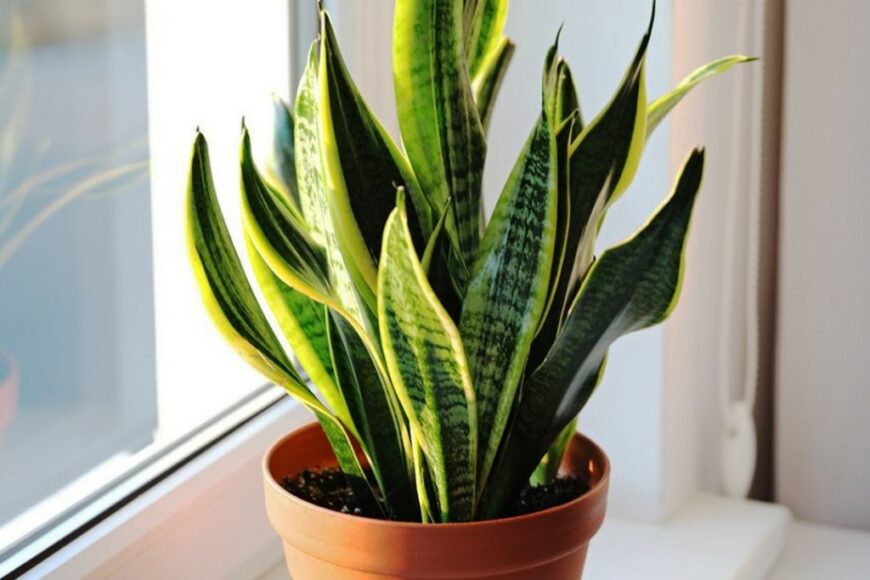
 Name: Official name: Sansevieria trifasciata, Alternative names: Snake plant, mother-in-law's tongue, viper's bowstring hemp, Dracaena trifasciata
Name: Official name: Sansevieria trifasciata, Alternative names: Snake plant, mother-in-law's tongue, viper's bowstring hemp, Dracaena trifasciata Family: Asparagaceae
Family: Asparagaceae Origins: Tropical West Africa
Origins: Tropical West Africa Humidity: Adaptable to a range of humidity levels, but prefers moderate humidity
Humidity: Adaptable to a range of humidity levels, but prefers moderate humidity Location: Prefers bright indirect light, but can tolerate low light conditions
Location: Prefers bright indirect light, but can tolerate low light conditions Soil: Well-draining, sandy or loamy soil
Soil: Well-draining, sandy or loamy soil Pests and diseases: Generally resistant to pests and diseases, but occasional problems with mealybugs, scale insects, and root rot
Pests and diseases: Generally resistant to pests and diseases, but occasional problems with mealybugs, scale insects, and root rot Care: Very low-maintenance plant that requires infrequent watering and minimal fertilization
Care: Very low-maintenance plant that requires infrequent watering and minimal fertilization Height of growth: Varies depending on the species, but typically grows 2-4 feet tall
Height of growth: Varies depending on the species, but typically grows 2-4 feet tall Planting in the soil: Choose a pot with drainage holes and use a well-draining potting mix. Plant the snake plant at the same depth it was growing in its nursery pot. Water the plant thoroughly after potting.
Planting in the soil: Choose a pot with drainage holes and use a well-draining potting mix. Plant the snake plant at the same depth it was growing in its nursery pot. Water the plant thoroughly after potting. Blooming: Blooms infrequently, typically producing small, greenish-white flowers in the spring or summer
Blooming: Blooms infrequently, typically producing small, greenish-white flowers in the spring or summerSnake Plant, scientifically known as Sansevieria, has become a staple in home decor. Its sleek, upright leaves and low maintenance make it a favorite among plant enthusiasts. In this article, we’ll explore the various facets of Snake Plants, from their botanical background to creative uses in DIY projects.
Content:
Botanical Background
Belonging to the Asparagaceae family, the Snake Plant boasts an impressive array of common names, including Mother-in-law’s Tongue and Devil’s Tongue. Its resilience and adaptability have made it a popular choice for both novice and experienced plant enthusiasts.
Popular Varieties
The world of Snake Plants is diverse, with each variety showcasing unique features. From the compact Sansevieria trifasciata ‘Hahnii’ to the tall and elegant Sansevieria cylindrica, there’s a Snake Plant for every taste and space.
Ideal Growing Conditions
Ensuring the well-being of your Snake Plant involves understanding its basic needs. Providing the right balance of sunlight, water, and well-draining soil is key to fostering a thriving indoor garden.
Benefits of Having Snake Plants
Apart from their aesthetic appeal, Snake Plants are renowned for their air-purifying qualities. These green wonders absorb toxins and release oxygen, contributing to a healthier indoor environment. Their low-maintenance nature makes them an excellent choice for those with a busy lifestyle.
Aesthetic Appeal
Beyond their air-purifying prowess, Snake Plants add a touch of elegance to any space. Choosing the right pot and display option can elevate the visual appeal of these plants, turning them into stylish decor elements.
Health Benefits
Snake Plants don’t just look good—they also promote better health. Their ability to release oxygen at night can enhance the quality of your sleep, making them an ideal bedroom companion.
Propagation Techniques
For the avid plant parent looking to expand their Snake Plant collection, propagation is a rewarding endeavor. Learn the art of propagating Snake Plants and discover tips for ensuring a successful outcome.
Common Issues and Solutions
Even the most resilient plants can face challenges. This section addresses common problems in Snake Plant care, offering practical solutions for maintaining their vitality.
Myths and Facts
Separating fact from fiction, we debunk common myths surrounding Snake Plants. Learn the truth about their care requirements and why they’re a fantastic addition to any home.
Snake Plants in Folklore
Delve into the cultural and historical significance of Snake Plants. From ancient beliefs to practical applications, discover the rich tapestry of folklore woven around these green companions.
Snake Plant in Feng Shui
Uncover the positive energy and symbolism associated with Snake Plants in Feng Shui. Explore recommendations for optimal placement to invite good vibes into your home.
Creative Uses
Thinking beyond the traditional pot, this section explores creative uses for Snake Plants. From terrariums to hanging planters, discover unique ways to incorporate these green marvels into your living space.
Tips for Beginners
Embarking on your Snake Plant journey? Arm yourself with essential care tips and guidance on avoiding common pitfalls. Make the most of your plant parenting experience with insights from seasoned enthusiasts.
FAQs
- Can Snake Plants survive in low-light conditions?
- Snake Plants are known for their adaptability and can tolerate low-light conditions, but they thrive in bright, indirect light.
- How often should I water my Snake Plant?
- Allow the soil to dry out between waterings. Overwatering can lead to root rot, so it’s essential to strike the right balance.
- Are Snake Plants safe for pets?
- While Snake Plants are not toxic, they can cause mild irritation if ingested. Keep them out of reach of pets to be on the safe side.
- Do Snake Plants need fertilizing?
- Snake Plants are not heavy feeders, and too much fertilizer can harm them. A diluted, balanced fertilizer applied sparingly in the growing season is usually sufficient.
- Can I keep Snake Plants in my bedroom?
- Yes, Snake Plants are excellent bedroom companions. They release oxygen at night, promoting a better sleep environment.

